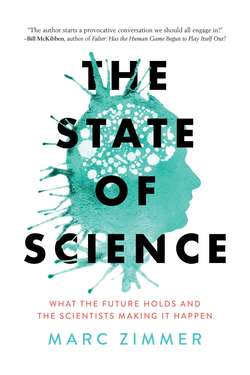Читать книгу The State of Science - Marc Zimmer - Страница 19
На сайте Литреса книга снята с продажи.
Implicit Bias
ОглавлениеGender disparities are decreasing in academia. However, many biases and gender inequities remain. This section looks at some of these “paper cuts.” Frances Trix and Carolyn Psenka of Wayne State University examined 300 letters of recommendation for medical faculty. They found significant differences between letters written for men and women. The average length of letters for female applicants was 227 words, whereas the average length of letters for male applicants was 253 words. Not only are the letters for women shorter, they also use descriptors such as “determined” and “dependable” more often and “outstanding” and “brilliant” less often than the equivalent letters for men. Letters for women are more likely to mention family situations and personal characteristics. And here is the kicker: it makes no difference whether the letters are written by men or women.[36]
The peer-review publishing model that the scientific publication system is based on is a single-blind process. Upon receiving a manuscript, a journal editor sends it to external reviewers with expertise in the research area. The reviewers know the identity of the authors, but the reviewers remain anonymous. They read the paper, recommend whether it should be published or not, and identify what changes are needed to make the paper acceptable if it is not quite ready for publication. To examine reviewer bias, Silvia Knobloch-Westerwick, Carroll Glynn, and Michael Huge of Ohio State University[37] recruited graduate students to rate conference abstracts authored by researchers with distinctively male or female names. The fake author identities on the abstracts were varied such that the same abstract would be attributed to a male-sounding name or a female-sounding name in a given test. Scientific abstracts submitted by “male” authors were considered of higher scientific quality than those submitted by authors with feminine names even though there was no difference in content. The gender of the reviewers did not influence these patterns. The differences were small but statistically significant. I am confident the same implicit biases appear when papers or presentations indicate that a work was done at a lesser ranked institution or in a developing country, or if the author has a foreign last name. Bias in peer review can affect the publication record of young scientists and impact their chances for promotion and tenure, a painful paper cut indeed.
The reviewing biases discussed here are not limited to graduate students. In 2012, Jo Handelsman and coworkers at Yale University showed that faculty at research-intensive universities favor male students. In a randomized double-blind study, 127 science faculty rated the application materials of a student, randomly assigned either a male or a female name, for a laboratory manager position. They found that “faculty participants rated the male applicant as significantly more competent and hireable than the (identical) female applicant. These participants also selected a higher starting salary and offered more career mentoring to the male applicant. The gender of the faculty participants did not affect responses, such that female and male faculty were equally likely to exhibit bias against the female student.”[38]
In 1998, Virginia Valian published Why So Slow?, a landmark book on bias.[39] In 2018, she and her coworkers analyzed gender differences in 3,652 colloquium speakers who presented their work at 50 prestigious U.S. colleges and universities in 2013–2014.[40] The proportion of women presenting colloquia was significantly smaller than for those presented by men. There was no difference in the extent to which male and female professors at these elite universities valued or declined speaking invitations. The difference was in the number of invitations offered. These biases have significant consequences, because as the authors say, “Colloquium talks are an important part of academicians’ careers, providing an opportunity to publicize one’s research, begin and maintain synergistic and productive collaborations, and enhance one’s national reputation; those results in turn typically lead to retention, promotion, or greater salary increases. . . . Colloquium talks also signal to audience members who is worthy of being invited.”[41]
Ending implicit biases is not going to be easy. Combating implicit bias is difficult at the best of times, but it is particularly hard in the sciences, where scientists believe that the process of doing science is rigorous and objective and as a consequence are convinced that they are not prone to bias. “Gender discrimination is everywhere,” says Christine Williams, a sociologist at the University of Texas at Austin. “But what makes the experience unique among scientists is their almost unflappable belief in objectivity and meritocracy.”[42] Another complication is the fact that in acknowledging implicit bias against underrepresented groups, established white male researchers have to accept that they may have been privileged in the attainment of their positions. “Some scientists might be slow to consider that the system could be rigged because it implies that their own accomplishments might not be totally deserved,” says Deborah Rhode, a legal ethicist at Stanford University. “They might also be less willing to see how helping their closest peers (mainly males) might simultaneously exclude others.”[43]
Biases can lead to discrimination, a much deeper cut than implicit bias. A 2018 Pew Research Center report finds that the majority of black people in STEM fields (62 percent) report having experienced some form of discrimination at their work due to their race or ethnicity. The survey also finds that half of women working in STEM jobs report experiencing discrimination at work due to their gender, more than women in non-STEM jobs (41 percent) and far more than men working in STEM jobs (19 percent).[44] As mentioned previously, more women working in the Massachusetts biotech sector left their places of employment because of workplace issues than for family reasons. Discrimination does not lead to an inviting workspace, and it encourages scientists with important ideas and skills to leave the field.
